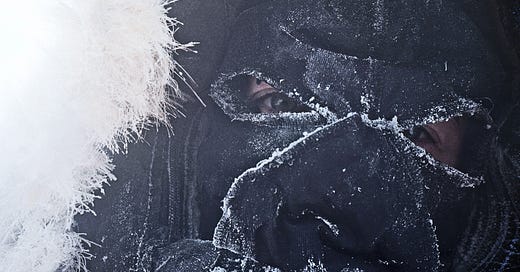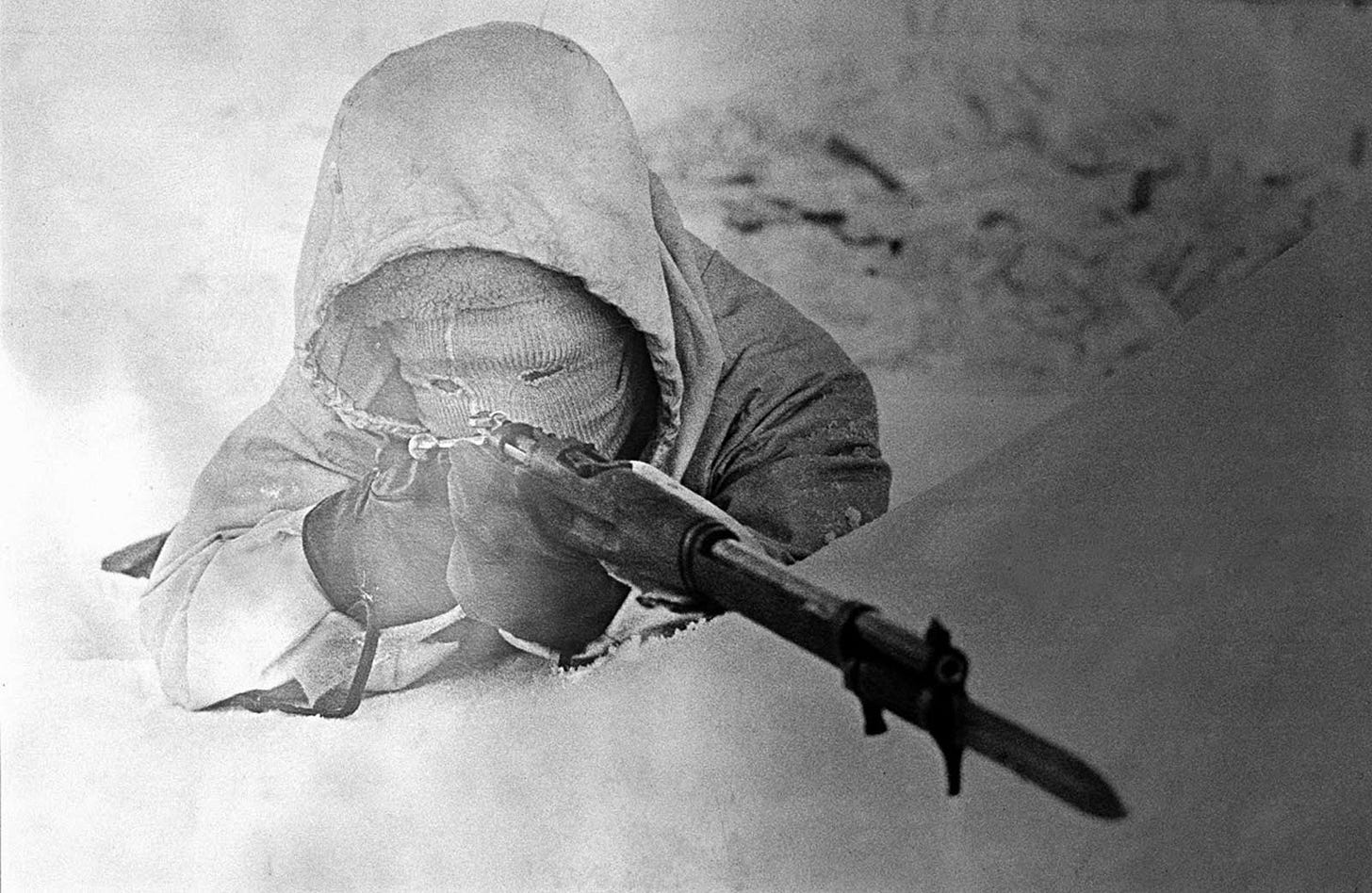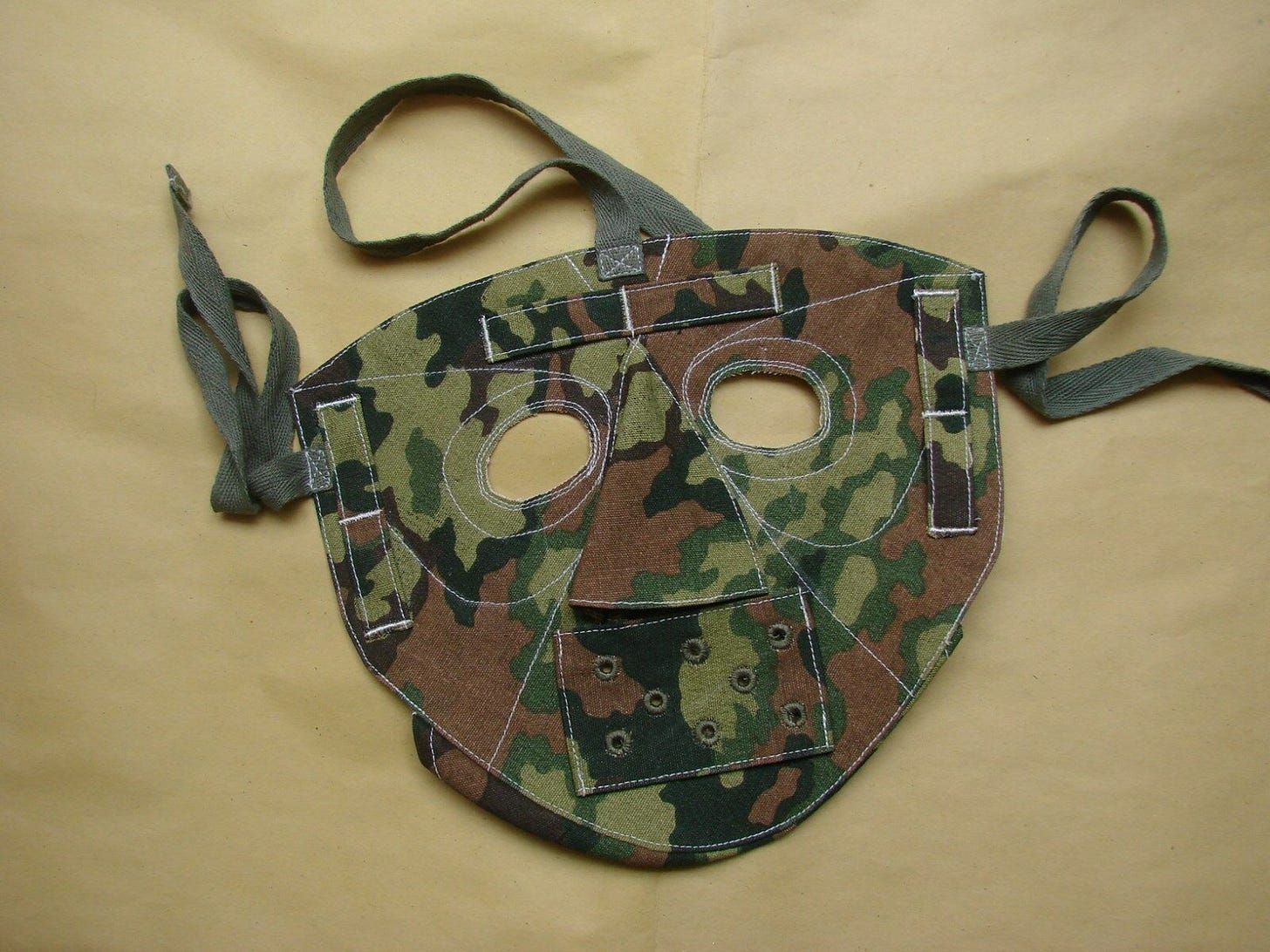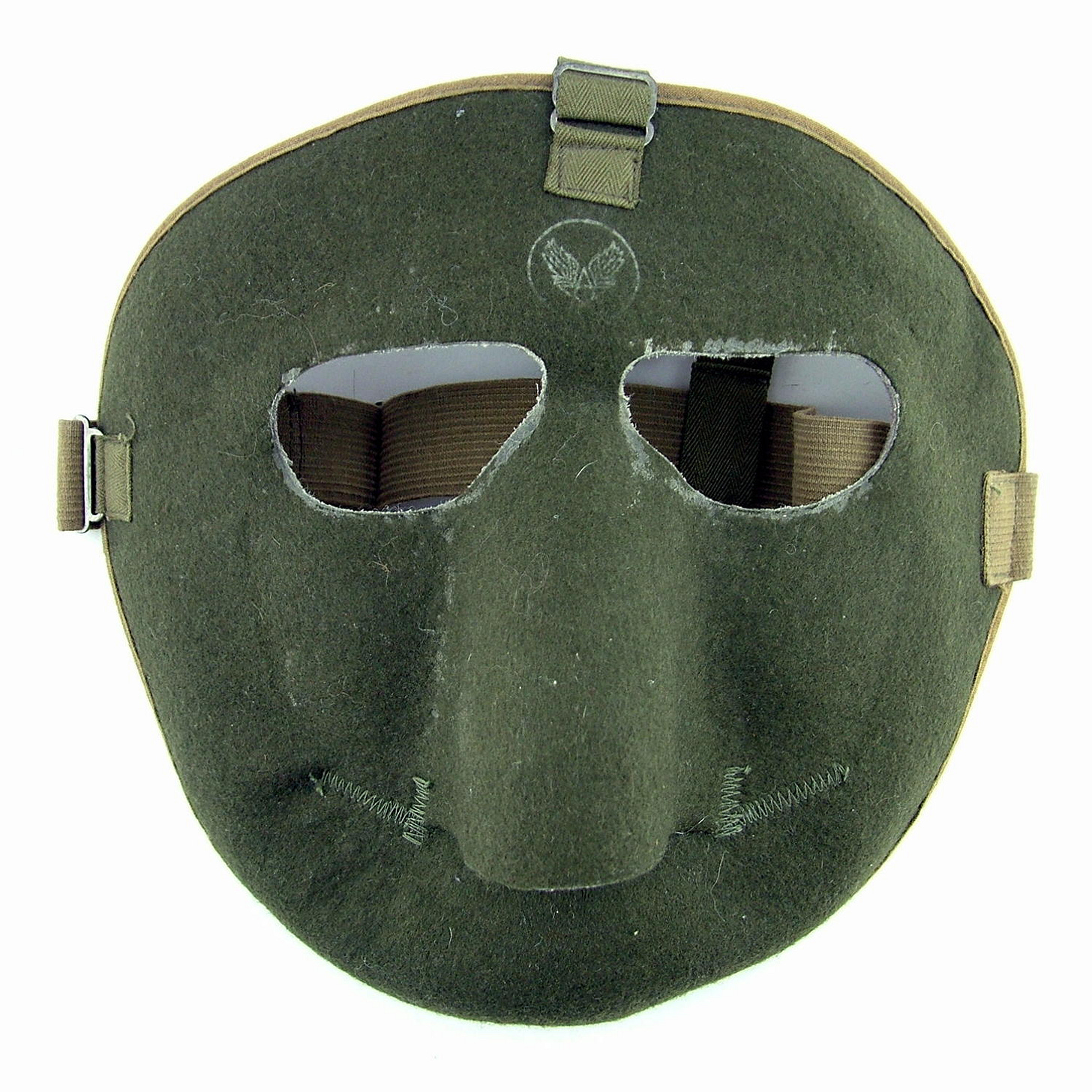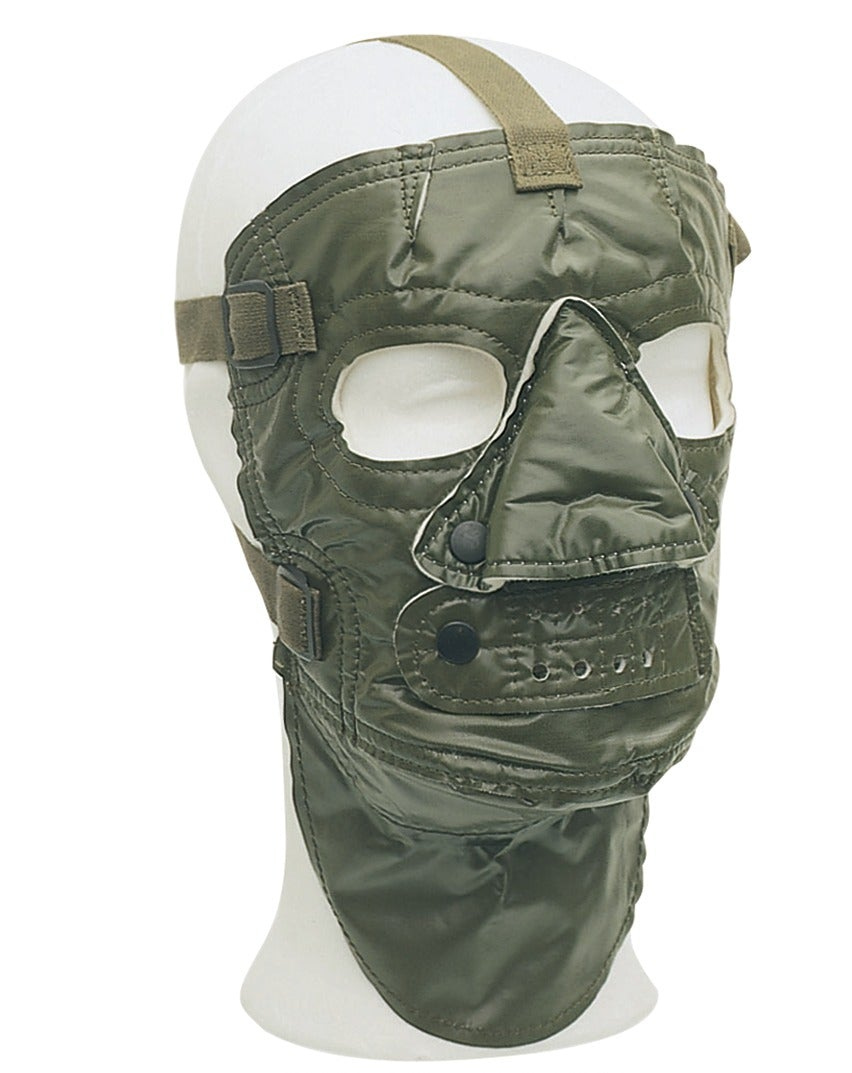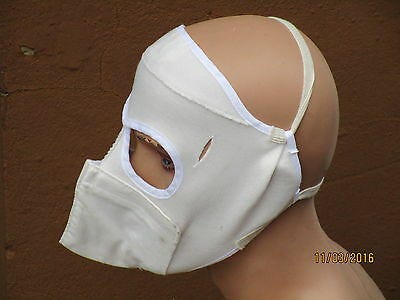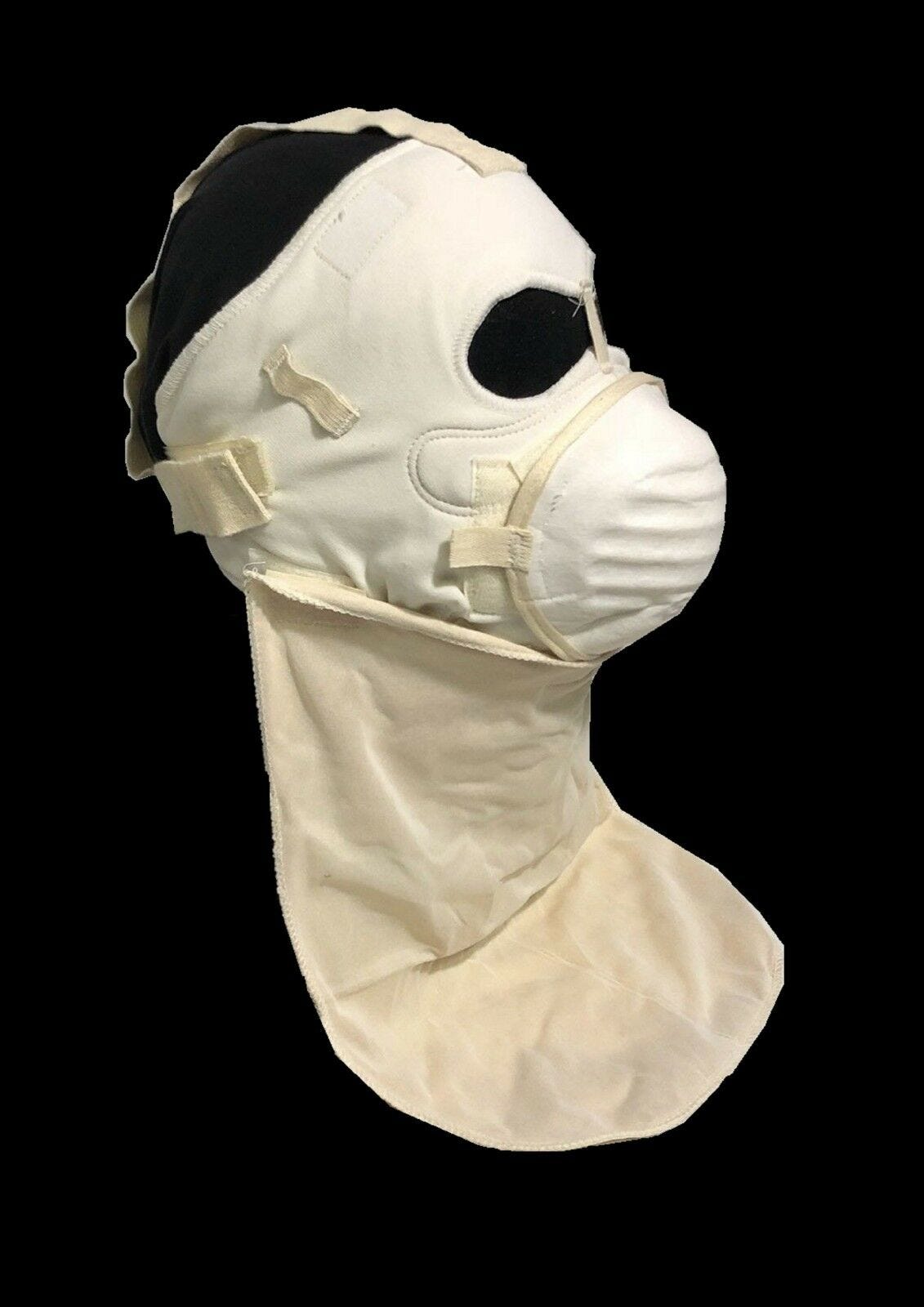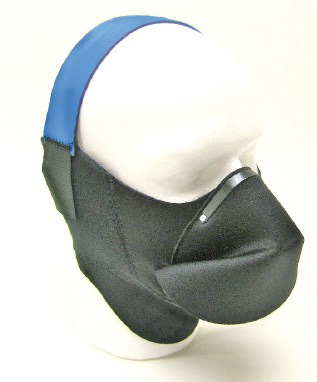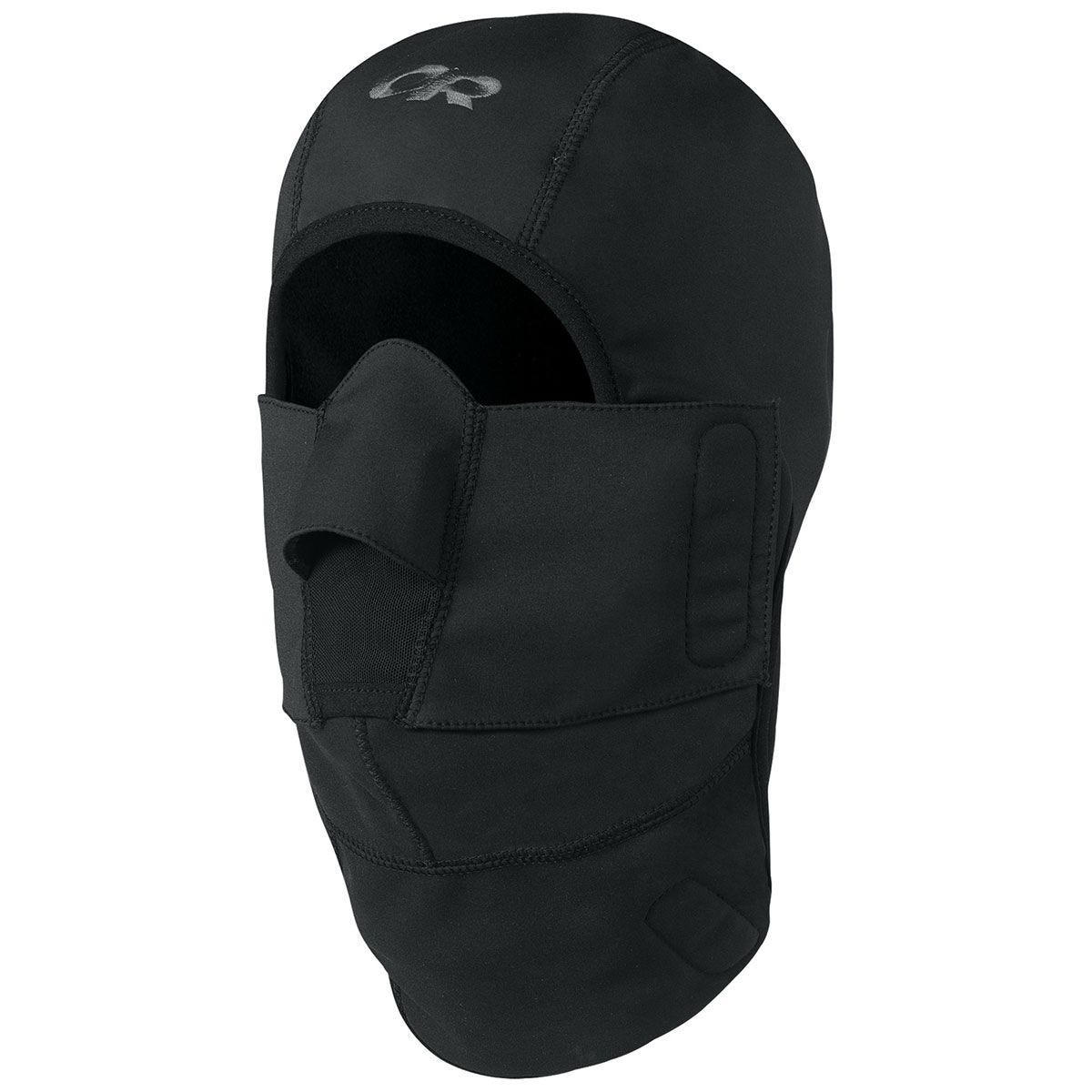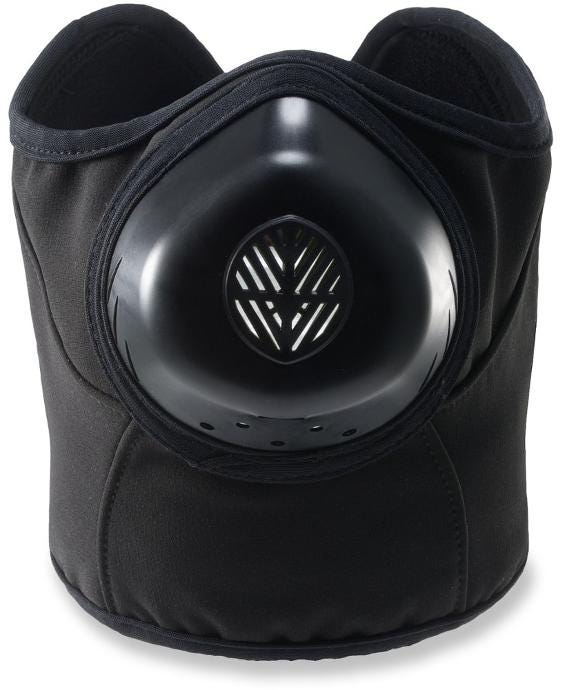By a Thread: Face Protection
The following article looks into the subject of facemasks for use in extreme weather environments.
Hats, hoods and Balaclavas
The hood is a detail of clothing that serves many purposes. It keeps the sun off your head in hot weather and sand and grit in dry windy weather. It keeps the rain off your head, and if waterproof, hopefully, it stops the rain from running down your neck and soaking you. In winter, it blocks the wind and protects your vital sensory functions, and can be vital for survival, as your noggin requires a high degree of protection in order to remain functional.
The problem with a hood is also its advantage, in that it closes you off from your environment. which is why road cyclists and soldiers tend not to wear them unless absolutely necessary, their disadvantages (not seeing the enemy in time, being that a car or another soldier), outweighing their advantages.
The hat is an alternative to a hood, as it allows one to protect the head, but without sacrificing one’s senses, which is one reason I suspect early humans favoured head coverings made from animal skins. When wearing a hat, the hat will move with the head (unlike a hood), and come in countless styles, weights, and fabrics. In terms of winter protection and warmth, the best tend to give protection to the head and ears, either Peruvian or Russian Ushanka style, but even a knitted hat can be very effective.
The humble balaclava, fleece, wool, animal fur, can be defined as dedicated head clothing, as it has no real formal function – unlike a hat – well, not unless you’re robbing a bank. This style of head and neck (and sometimes shoulder) covering, leaving the face exposed, is generally attributed to the Crimean War, where soldiers, bereft of winter clothing, knitted their own, close to the village of balaclava. In truth, the lineage of balaclava stretches much further back, at least to the 9th century, perhaps further, its ancestor being the coif, a form of a padded or knitted hood, either worn alone or under chainmail.
Unlike a hood, which is like a tent for your head, the balaclava is form-fitting and moves with the head, and neither obstructs one’s vision or hearing (unless it’s windproof), making it a highly functional hood alternative. This is the reason most winter climbers traditionally preferred to wear a balaclava under a helmet rather than a hood over a helmet unless in very bad weather.
The functionality of the balaclava, as well as improvements in fabrics (grid fleece and stretch fleece), saw a move away from extremely heavy-duty (and hot) knitted (and boiled) balaclavas to lighter versions which dried much faster, were lighter, less itchy, and could be pulled down like hood when not needed. Such lightweight balaclavas can also double up as a hat.
The increase in sophistication in balaclavas eventually led to hybrid ‘Ninja’ tops, whose hood design was more like an integrated balaclava than a standard hood. This allowed users to dispense with a balaclava altogether.
One aspect of all this headwear is that generally, the face is left exposed. This problem was traditionally dealt with by use of some form of versatile strip or square of woven or knitted fabric, such as the Roman Sudarium, the Arabic Shemagh, or what we’d now call “a scarf”. This item of clothing would - and still is - used in countless ways, including sealing clothing around the neck (hold in heat as well as protect the neck), or wrapped around the face or head.
It was only in the 20th Century that the face itself began to receive special attention, and its own dedicated clothing, in the form of the face mask. This article will look at the reasons for this development, as well as the pros and cons.
The Face
There’s a reason why boxers aim for the head: it’s the most vulnerable part of the human body, command centre, filled with and sprouting all kinds of bio tech: eyes, ears, nose, mouth, and of course, brain. And so, it's not surprising that the head is also highly vulnerable to environmental damage from both extreme cold and extreme heat. Basically, whether you’re a Bedouin or an Inuit, the head requires special attention, doubly so for the face.
In terms of sub-zero temperatures, the face is highly vulnerable to frostbite to the ears, nose, lips and cheeks; any exposed skin can freeze. In extreme cold, often matched with extreme wind, there is also risk to the eyes, with even the corneas freezing.
High winds, mixed with snow and hail or sand or dirt, can also be very painful to exposed skin, often leading to an odd kind of detachment and loss - or giving up of - situational awareness, and a form of blindness which often leads to getting lost, falls, and general poor thought processes.
On the flip side, many environments in which such conditions might be encountered can also expose the face and skin to high levels of UV, leading to debilitating sunburn, especially to the lips, nose, and eyes (this time the poor old cornea gets sunburn, not frostbite, aka ‘snowblindness’).
On a polar trip for example, an unlucky skier, who has failed to understand the risks of the environment they’re in, can – within a day of setting off – be suffering from both second-degree sunburn and frostbite.
Anyone venturing into a hostile environment is best to give as much thought to ‘face gear’ as they do hand and footwear.
What does a facemask do?
First of all, the role of a facemask is not to keep the face warm, but rather simply to stop the face – skin – from freezing. The warmth of the head comes from your other clothing, as well as what is covering the head. In practical terms, the facemask acts as a windblock to cut out the wind, as well as retain just enough heat in the skin to stave off frostbite. Any attempt to have a ‘warm face’, would no doubt lead to sweating and only increase the risk of frost injuries.
The practicality of a facemask is you want a mask that stays in place and does not impede function and ideally allows easy eating and drinking. It also needs to be easily removed, when working hard, and I would not recommend an integrated system, such as a balaclava with an integrated facemask unless you 100% know that’s what you need. Instead, I’d go for a modular headwear system, that allows a facemask to work as part of the system.
A historical and evolutionary viewpoint
In winter conditions, especially when navigating or simply trying to survive, a human has to call on all their senses: eyes to judge the terrain, hearing to estimate the severity of the wind, skin to pick up its direction, and nose to sniff out trouble. A person trying to survive or operate in a harsh winter environment who wraps their head up deep inside a hooded parka might be fully protected, but they are not going to be able to do very much at all, which could well be a greater danger than the cold.
In terms of human evolution and survival, this translates as humans would not be able to hunt unless they could make the maximum use of their senses in winter. In practice, though, no hunter would hunt in a blizzard, as it would be both too high risk and too low reward, and so I suspect early humans adopted systems that worked best in ideal conditions, not the most extreme.
In all extreme environments (arctic or sub-arctic), the system adopted was either a fur hat, or a fur hood, either sewn into a winter garment or worn separately (like the coif). An arctic hood is designed to create a warm ‘plug’ around the face, and so avoid frost injuries, as well as reduce the effects of wind, but maximising sense function. Such clothing was typically worn by Saami and Inuit peoples.
Such headwear and the protection it provided could be effective in blizzards, or of caught out, but just as many fishermen – masters of their environment – drowned or died of hypothermia, early humans would no doubt tried and avoid extreme weather events; when it stormed, they’d hunker down (history is filled with stories of people forced to move in winter storms who perished in those storms).
As ever, it’s worth highlighting warfare here, in that armies did not fight in winter as the death toll from the cold would generally be higher than from one’s enemy. For example, Neoplean’s death march back from Moscow in temperatures as low as -38 degrees C, cost him 100,000 men.
The best of the early arctic and antarctic explorers of the late 19th and early 20th centuries made use of Inuit and Saami clothing technology, while those that failed to recognise it as technology suffered greatly. Roald Amundsen, for example, made good use of Inuit clothing, including deep fur hoods, while Scott did not, preferring balaclava, scarves and canvas hoods, which would leave the face far more exposed.
World Wars
It was only really in the 20th Century that armies began to fight consistently in winter conditions, with the Finns becoming the masters of it, defeating the Russian’s in the Winter war of 1939 to 1940. The Russians learnt from this defeat and used its lessons to later defeat the German army at Stalingrad.
And so it was during WW2 that full winter face coverings began to appear, to protect the faces of soldiers who had no choice but to fight in frigid conditions but who also needed all their senses in order not to be killed. These face masks are most often seen being used by Finnish and Axis snipers, acting both as camouflage and protection covering (canvas), but also by high altitude bomber crews (felt).
The use of facemasks stepped up during the Cold War, especially after the Korean war, with armies training for warfighting in the far North (Norway and Alaska especially), as well as for use by soldiers stationed in the Arctic including bases in Greenland (the DYE line).
These masks ranged in sophistication, with the US Army extreme weather mask being the most complex, featuring removable nose and mouth sections, and made from a laminate of polyamide and vinyl, looking to all but the most expert eye like a green S&M gimp mask. The impression I get from the US mask was it was designed primarily for guard duty, as well as scaring anyone you came upon to death and is probably overkill.
The NATO style mask, used primarily in Norway, is a much simpler affair, and is made from polyester, and acts as a frostbite protector for the skin, and is far more functional, being more clothing and less equipment. I’ve used such a mask many times, and is great in high winds, protecting the nose and cheeks especially, as well as protecting the skin from UV. This mask also features an envelope of fabric that can be fitted over the mouth, designed to combat breathing in super cold air when exercising, which can lead to bronchial issues (winter or high altitude cough), a feature that would later be commercialised in the form of the Cold Avenger line.
The US Marines field a facemask somewhere between the two models, but like the NATO mask, designed primarily as a wind-blocking layer. The stand out feature of this design is its long front ‘bib’, which can be tucked into other clothing layers, and so better protect the neck.
The Civilian market
The most obvious demand for commercial winter facemasks came from the skidooing market, where speed was also a factor in the need for face protection (an skiddo going at 80 mph at minus 20 degrees is a hazard to the face of the driver). This led to all sorts of face mask designs over the years, including plastic face guards (wind blockers), some with integrated goggles (popular also with polar skiers).
A huge focus on such facemasks was both skin protection, but also how to reduce fogging of goggles, as goggles had now become a vital part in face protection as well. To achieve this difficult task, which is a little easier for someone sat on a skiddoo, rather than skiing uphill, non-breathable fabrics were employed, as well as both maximum sealing around the eyes, and redirection of breath out of the mask.
Neoprene had long been the fabric most used for face masks, as it does not ice up like fleece, and is windproof yet still retains some insulating properties, something only achievable in the past by sewing together a fleece and woven fabric.
As skis improved, including fat skis, as well as heli-skiing, so did the skiing of deep powder. This led to skiers having to adopt improved face protection, meaning both the adoption of skiddoo masks, but also sewing up their own, with the stand out neoprene face mask being the Ice Trek Guru mask, being simple, compact but very effective.
The big breakthrough and mainstream use of masks probably came about with the invention of laminated “windproof” fleeces, which worked like neoprene, but was a little warmer and more friendly (until it froze up with ice and snot). An early adopter of windproof fleece was Outdoor Research, with their Gorilla balaclava, featuring a velcro face mask, being one of the first mountain masks. It’s also worth noting that Hamish Hamilton’s Buffalo hood also featured a removable face mask, that could be velcroed on and off the hood.
Many of the fleece facemasks that appeared on the market, such as the Gorilla, although appearing ideal, were often far less so in the field. To begin with, anything complicated or making use of velcro or press studs, tended to stop working in any storm conditions, and simplicity always works best. For example, the Mountain Hardwear windproof balaclava looked like the Outdoor Research model, but featured no velcro at all, and so was far more functional in extremes.
The use of some form of rebreathing system reappeared in the 2010s, both in DIY forms, such as the masks made by the Russians on their winter attempt on K2, as well commercial designs, such as the masks made by Cold Avenger. These masks tried to both protect the face from wind and cold, while also dealing better with the tricky issue of protecting the mouth and respiratory tract, without either reducing oxygen levels or icing up the whole system. In the Cold Avenger system, the mouth is protected by a flexible plastic facepiece, like an oxygen mask, that is less prone to ice build-up, and be easily cleaned. At the moment, in terms of face protection for extreme use, the Cold Avenger system remains the best there is.
Facemask Alternatives
For less extreme use, the introduction of the humble microfibre Buff or neck tube has done a great deal to better protect the face, both from cold and wind and sun. You will now see people making use of a buff even on Hymalian winter ascents, its primary advantage being it stays in position, and is neither too hot or too sweaty, and dries very quickly.
The use of a fur-trimmed hood, ideally made from wolf or wolverine, is by far the best way to protect your face from wind or cold, but for most people, this is not really a practical solution, as it only works in cold and dry environments. You will also find an increasing number of balaclavas that cover the entire face, but generally non are at all windproof, and so they tend to be very ineffective, and a buff matched with a balaclava would be a better mix.
A very good system is a two-layered wrap around, where you have a close to the skin layer covering the mouth, such as a merino buff, then a baggy windproof layer worn over that. The aim is to create dead air space around the mouth that your body keeps warm, although this system is impractical for winter climbing, as such a dead area will just act as a snow trap.
So who needs a facemask?
I would say that I’m an extreme user, but I’ve had minimal use of a facemask, but when I have used one, it’s really saved my face, and my nose, and my lips. Classic situations would be moving in a storm when you want to be able to look around without risk to your face, or end up hidden deep in your hood, a little how you feel when wearing goggles in a Scottish winter storm. I’ve also made use of facemasks when skiing, both against the wind, and also from the UV, having sewn up my own UV face masks for this purpose. And so I’d view carrying a small and compact face mask, something cold the Ice Trek model, or a surplus NATO one, in the top of your bag, along with your goggles, as a little insurance policy for when things get very bad indeed.

